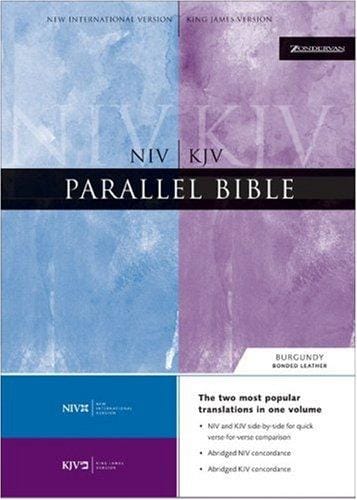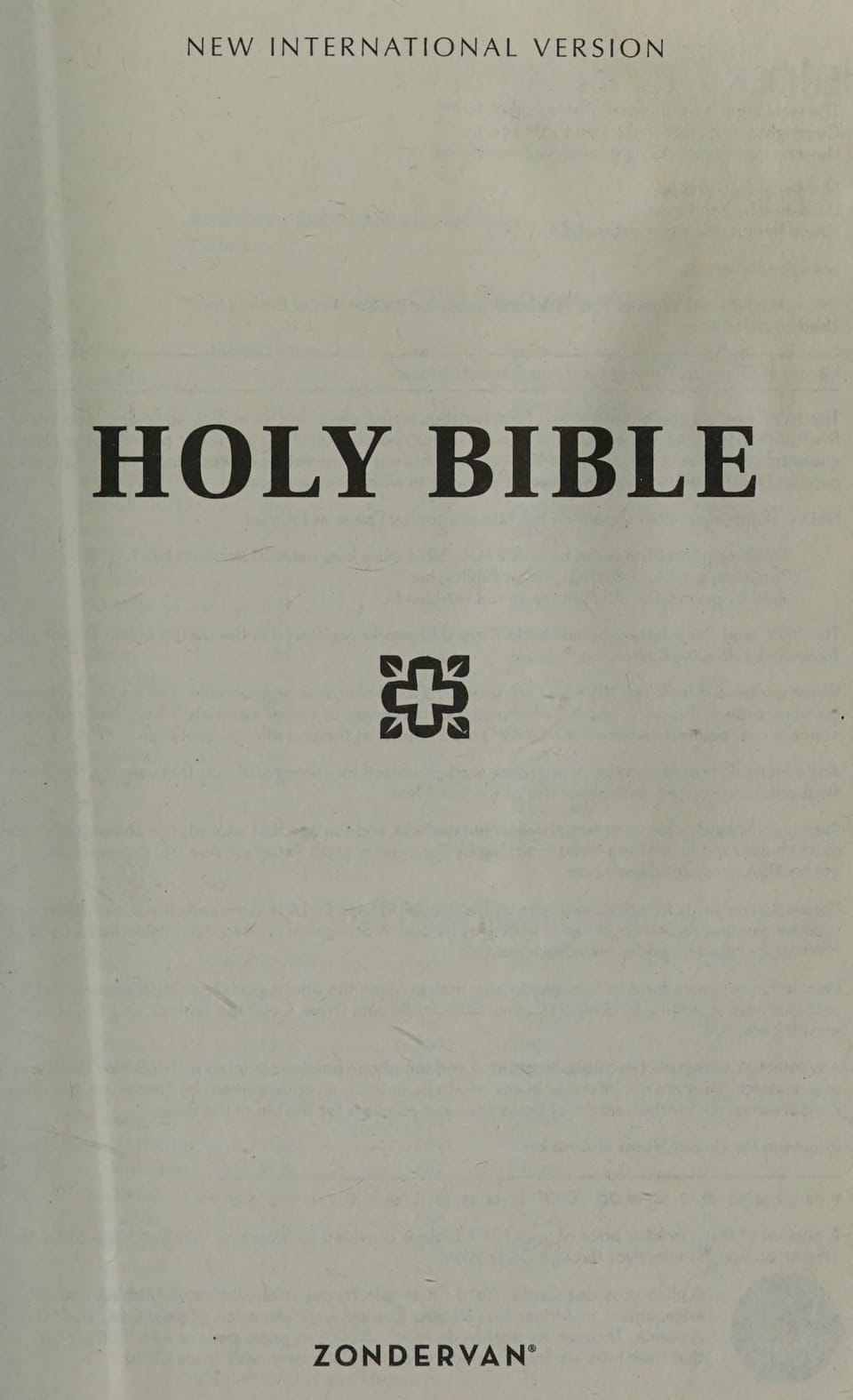NIV/KJV Parallel Bible: Why Two Translations Are Better Than One
Discover the advantages of a NIV/KJV Parallel Bible for deeper study, clearer understanding, and easier verse comparison in print or digital format.

Introduction: Two Voices, One Message
The Bible has been translated into hundreds of languages and, within English alone, into dozens of major versions. Two of the most read are the New International Version (NIV) and the King James Version (KJV). A NIV/KJV Parallel Bible places these respected translations on facing pages or in side-by-side columns, allowing readers to compare wording, cadence, and nuance instantly. Whether you are new to Scripture or a seasoned student, a parallel edition can sharpen comprehension, enrich devotional reading, and illuminate the timeless message of God’s Word.
What Is a NIV/KJV Parallel Bible?
A parallel Bible is a single volume that presents two or more translations next to each other for direct comparison. In a NIV/KJV Parallel Bible, every verse from Genesis to Revelation appears in both the modern, thought-for-thought language of the New International Version and the classic, word-for-word prose of the King James Version. Layouts vary, but most feature twin columns or a split-page design so your eyes can glide effortlessly from one rendering to the other.
The Strengths of the NIV Translation
First published in 1978 and updated in 2011, the NIV balances accuracy with readability. Translators followed a dynamic equivalence philosophy, aiming to convey the original meaning in contemporary English. As a result, the NIV is widely used in churches, small groups, and personal study because its sentence structure mirrors modern speech patterns. Idioms that might confuse twenty-first-century readers are clarified, and archaic vocabulary is replaced with familiar words without sacrificing fidelity to ancient manuscripts.
The Enduring Appeal of the KJV
Commissioned in 1604 and completed in 1611, the King James Version has shaped English literature, theology, and worship for over four centuries. Its majestic rhythm and memorable phrasing—“The Lord is my shepherd; I shall not want”—are embedded in Western culture. Scholars admire the KJV for its formal equivalence approach, preserving much of the original Hebrew and Greek word order. Many readers cherish the reverence conveyed by its "thee," "thou," and "ye" pronouns, which highlight the sacred nature of the biblical text.
Five Key Benefits of Using a NIV/KJV Parallel Bible
1. Immediate Clarification
Difficult or archaic expressions in the KJV become clearer when the NIV’s modern wording sits right beside them. You do not need to reach for a secondary reference; the explanation is already on the page.
2. Deeper Word Studies
Seeing divergent phrases prompts investigation. Why does the NIV say “steadfast love” while the KJV says “loving-kindness”? Exploring such differences can lead you to Hebrew or Greek root words and broaden your theological insight.
3. Balanced Perspective
Every translation involves choices. By reading two simultaneously, you reduce the risk of basing a doctrine or life decision on a single rendering. The NIV offers clarity; the KJV offers fidelity. Together they provide balance.
4. Enhanced Memorization
Some believers grew up quoting the KJV and want to retain that heritage, while others prefer the NIV’s fresh flow. A parallel edition lets families, study groups, and congregations memorize the same verse in the wording that resonates most.
5. Convenient Study Tool
Carrying one book is easier than juggling two. A NIV/KJV Parallel Bible reduces bulk without sacrificing depth, making it ideal for church, classroom, or travel.
Popular Print Editions to Consider
Publishers such as Zondervan, Thomas Nelson, and Hendrickson offer a variety of NIV/KJV parallel formats. Large-print editions assist aging eyes, while compact thinline versions slip neatly into a backpack. Study editions may include cross-references, footnotes, concordances, and full-color maps. When choosing, examine font size, paper opacity, and binding quality. Smyth-sewn bindings lie flat on a desk, an advantage during prolonged study sessions.
Digital Options: Parallel on Your Screen
If you prefer screens to paper, Bible apps like YouVersion, Olive Tree, and Logos allow you to display the NIV and KJV in split-screen mode. Digital platforms add powerful search features, note-taking, and audio playback. Some apps synchronize verses across translations, so scrolling in one automatically moves the other. This convenience is perfect for pastors crafting sermons on a tablet or commuters listening to Scripture on a phone.
How to Get the Most Out of Your Parallel Bible
Read Slowly and Prayerfully
Resist the urge to skim. Allow the phrasing differences to spark meditation. Pause after each paragraph to ask what added insight the second translation provides.
Use Highlighters Strategically
Color-code themes such as grace, faith, or prophecy across both columns. Visual cues help you trace motifs and remember key verses.
Compare Context, Not Just Words
When a phrase varies significantly, read the entire paragraph in both versions. Sometimes a single word change alters tone or emphasis, but context reveals the author’s consistent intent.
Record Questions
Keep a journal or use app notes to jot down questions that arise. Later, consult commentaries or original language tools to deepen your understanding.
Who Will Benefit Most?
• New believers who want straightforward language yet appreciate the literary heritage of the KJV.
• Students in Bible colleges comparing translation philosophies.
• Pastors preparing sermons that resonate across generations.
• Families conducting multigenerational devotions.
• Anyone seeking a richer grasp of Scripture without purchasing multiple Bibles.
Frequently Asked Questions
Is the KJV harder to understand?
Its seventeenth-century English can challenge modern readers, but a parallel layout offsets difficulty by providing the NIV’s contemporary phrasing for immediate clarity.
Does using two translations cause confusion?
On the contrary, seeing subtle wording differences reveals the depth of Scripture and often resolves apparent contradictions by presenting varied shades of meaning.
Which translation should I memorize?
Choose the one you will recall and use most. Some memorize poetic passages like Psalm 23 in the KJV for its rhythm, while citing gospel narratives in the NIV for simplicity.
Conclusion: A Bridge Between Past and Present
The NIV/KJV Parallel Bible bridges four hundred years of translation history, joining the eloquence of the King James with the clarity of the New International Version. By offering two voices that proclaim one message, it invites readers to experience Scripture in stereo. Whether in print or on a screen, this tool equips you to explore the Bible’s depths, hear familiar verses anew, and grow in knowledge and faith. If you are looking for a single resource that honors tradition while embracing accessibility, a NIV/KJV Parallel Bible belongs on your shelf—or in your pocket—today.


